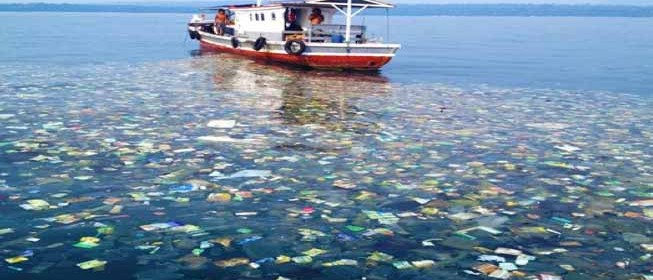Plastic trash transforms the Pacific

The amount of plastic garbage in the North Pacific Ocean has risen a hundredfold since the 1970s, and the floating debris is now so abundant that marine life is adapting to its presence. Researchers from the Scripps Institution of Oceanography sampled an expanse of the sea between Hawaii and California, where currents tend to deposit flotsam from around the Pacific basin, and found a garbage patch, or gyre, the size of Texas, with the plastic mostly broken down into confetti-size chunks. Discarded Styrofoam, plastic bags, and other buoyant refuse has added “hundreds of millions of hard surfaces to the Pacific Ocean,” says study author Miriam Goldstein, providing far more places for one marine insect, the water strider, to lay its eggs.
The flourishing water striders are consuming more plankton and fish eggs than ever, Goldstein says, and the insects’ new abundance may also be creating a boom in the predators that dine on them, such as crabs. Meanwhile, marine creatures are swallowing some 12,000 to 24,000 tons of the plastic per year: Nearly one in 10 fish caught in the North Pacific has plastic in its stomach. Oceanographer Curtis Ebbesmeyer says the only way to stop the “Great Pacific Garbage Patch” from growing is to switch to biodegradable plastic. “We can’t clean it up” he says. “It’s just too big.”

 Print
Print